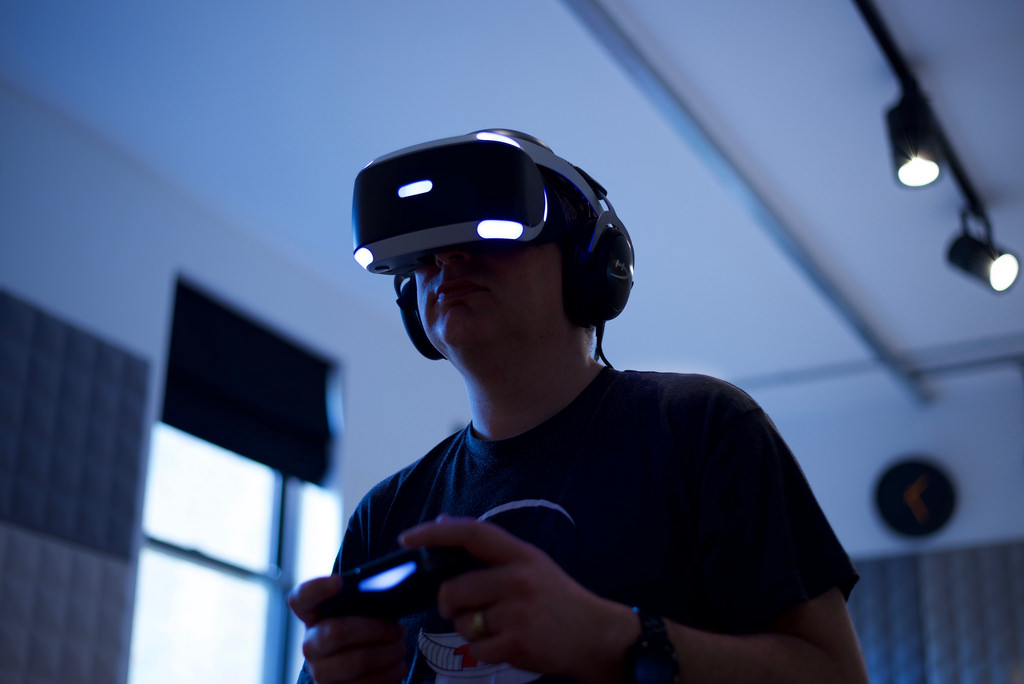Technological solutions of Nitero provide high performance in virtual reality environments of room scale at low delays, which is one of the most important factors for comfortable perception of virtual reality. At the same time, Nitero's development allows creation of wireless solutions, which provides a certain freedom of movement within the premises.
"The helmet’s wires, hampering the user, remains a significant obstacle to widespread adoption of VR," said Mark Papermaster, CTO and senior vice president of AMD. "The recently acquired wireless virtual reality technology is precisely aimed at solving this problem, and is another example of AMD's long-term investments in computing and graphics technology, allowing you to create more immersive computer effects."
Key engineers of the company will join AMD and continue their work on the interface, which relies on the technology of millimeter waves, and should allow future generations of virtual and augmented reality sets to get rid of wires.
Nitero has developed a microcontroller for controlling the phase array antenna operating in the 60 GHz band. Formation of a directional beam of signals solves the problem of line of sight, which is typical for traditional systems based on millimeter waves, which can be an excellent replacement for wires in VR- and AR-helmets.
AMD believes that wired connection of virtual reality helmets to computers is one of the main constraints to the wide spread of virtual reality. Through the purchase of Nitero, the company will be able to focus on eliminating this problem.
Having joined AMD, Nitero technology will be supported by the major supplier of computer equipment. Despite the relative youth of the VR market, AMD is already under pressure from Intel and Qualcomm – both of them already have units and technologies for wireless data transmission at 60 GHz.
"Our team of world-class engineers was creating wireless virtual reality technologies that could be built into the next generation of helmets," commented one of the founders and CEO of Nitero, Patrick Kelly, who joined AMD as Corporate Vice President of wireless technology. "And we are very pleased to be able to play our part in implementation of AMD's long-term technology strategy."
In many respects, last year became the defining for VR-industry. Oculus, HTC, Google and Sony released consumer versions of VR-sets, and many large game publishers and studios introduced or announced VR-games of different genres and formats. Many countries created the first industry associations, the purpose of which was consolidation of marketing and content assets, as well as development of common technological standards.
At the same time, widespread use of VR-devices and VR-content in the consumer market is hampered by relatively high cost of the VR gadgets, lack of quality content and massive prejudices of people who are afraid of virtual reality.
source: techcrunch.com
"The helmet’s wires, hampering the user, remains a significant obstacle to widespread adoption of VR," said Mark Papermaster, CTO and senior vice president of AMD. "The recently acquired wireless virtual reality technology is precisely aimed at solving this problem, and is another example of AMD's long-term investments in computing and graphics technology, allowing you to create more immersive computer effects."
Key engineers of the company will join AMD and continue their work on the interface, which relies on the technology of millimeter waves, and should allow future generations of virtual and augmented reality sets to get rid of wires.
Nitero has developed a microcontroller for controlling the phase array antenna operating in the 60 GHz band. Formation of a directional beam of signals solves the problem of line of sight, which is typical for traditional systems based on millimeter waves, which can be an excellent replacement for wires in VR- and AR-helmets.
AMD believes that wired connection of virtual reality helmets to computers is one of the main constraints to the wide spread of virtual reality. Through the purchase of Nitero, the company will be able to focus on eliminating this problem.
Having joined AMD, Nitero technology will be supported by the major supplier of computer equipment. Despite the relative youth of the VR market, AMD is already under pressure from Intel and Qualcomm – both of them already have units and technologies for wireless data transmission at 60 GHz.
"Our team of world-class engineers was creating wireless virtual reality technologies that could be built into the next generation of helmets," commented one of the founders and CEO of Nitero, Patrick Kelly, who joined AMD as Corporate Vice President of wireless technology. "And we are very pleased to be able to play our part in implementation of AMD's long-term technology strategy."
In many respects, last year became the defining for VR-industry. Oculus, HTC, Google and Sony released consumer versions of VR-sets, and many large game publishers and studios introduced or announced VR-games of different genres and formats. Many countries created the first industry associations, the purpose of which was consolidation of marketing and content assets, as well as development of common technological standards.
At the same time, widespread use of VR-devices and VR-content in the consumer market is hampered by relatively high cost of the VR gadgets, lack of quality content and massive prejudices of people who are afraid of virtual reality.
source: techcrunch.com





